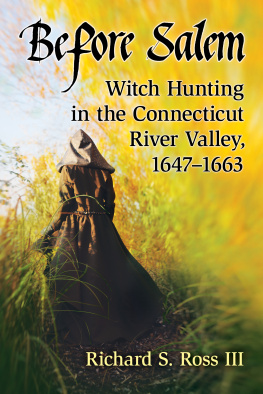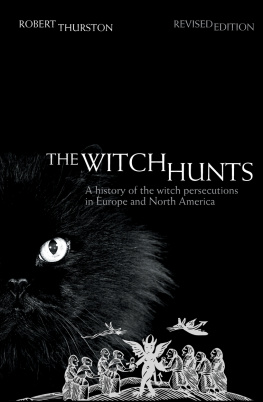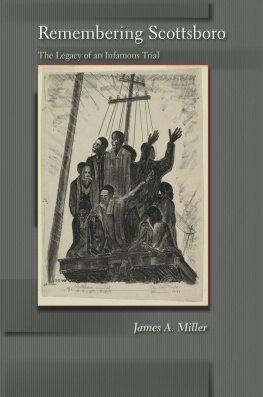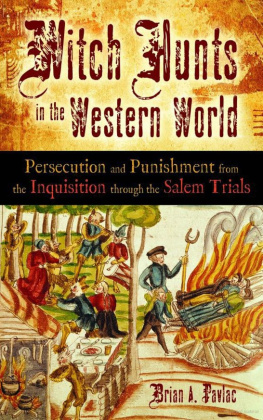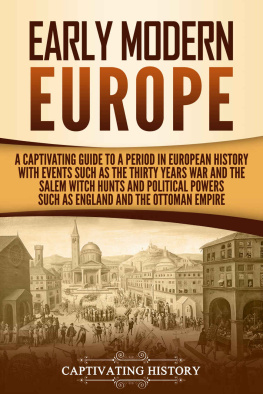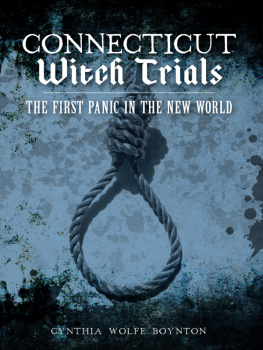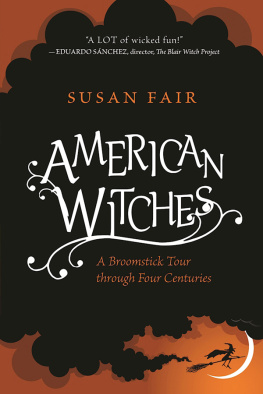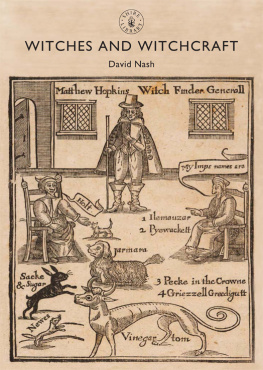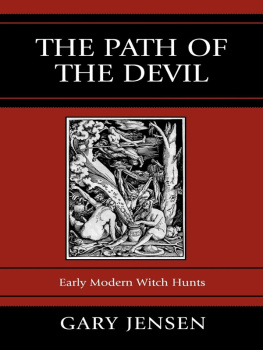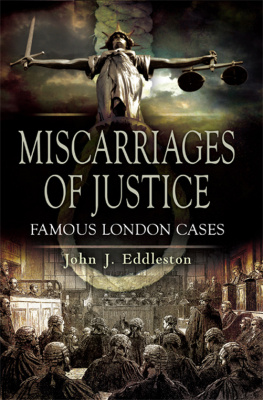WITCH HUNTS
Witch Hunts
From Salem to Guantanamo Bay
ROBERT RAPLEY

McGill-Queens University Press 2007
ISBN 978-0-7735-3186-4
Legal deposit first quarter 2007
Bibliothque nationale du Qubec
Printed in Canada on acid-free paper.
McGill-Queens University Press acknowledges the support of the Canada
Council for the Arts for our publishing program. We also acknowledge
the financial support of the Government of Canada through the Book
Publishing Industry Development Program (BPIDP) for our publishing
activities.
Library and Archives Canada Cataloguing in Publication
Rapley, Robert, 1926
Witch Hunts: from Salem to Guantanamo Bay / Robert Rapley.
Includes bibliographical references and index.
ISBN 978-0-7735-3186-4.
1. Terrorism Prevention Political aspects United States.
2. Judicial error History. 3. Trials (Witchcraft) History. I. Title.
JC571.R365 2007 323.49 C2006-904925-4
This book was typeset by Interscript in 10.5/13 Sabon.
To Kate, Alison, Ann, Rob, John, Brenda, and Pat
My constant joys without whom I might have started
writing much sooner
Introduction
The great witch hunts of the past took place at times of great fear in the West. Fear was a prerequisite for witch hunts. It still is. There are frightening parallels between the hunt for witches in the past and the hunt for terrorists today. The witch has been replaced by the terrorist with equal dangers to the individual, for the most pronounced characteristic of a witch hunt is that the accused is automatically treated as guilty.
This book first describes three famous witchcraft events of the seventeenth century: Bamberg and Wurzburg in Germany, Loudun in France, and Salem in Massachusetts. It becomes evident that witch hunts have certain characteristics for example, the accused person is assumed to be guilty without proof, secret accusations are accepted, evidence against the accused is often falsified, torture can be used.
I then turn to modern events that occurred in times of fear: the Dreyfus Affair in France (treason), the Scottsboro Boys in Alabama (gang rape of two white girls by black boys), the Maguire Seven in England (terrorism). They were each about alleged crimes, but they all met the characteristics of and were, in fact, witch hunts. The witch had been replaced by a traitor, a group of rapists, a terrorist cell. Witch hunting is not solely an activity, but also a state of mind that develops when a society is under great stress and such a state of mind exists today.
The third part of the book concentrates on the United States since 11 September 2001. The antiterrorist PATRIOT Act was passed six weeks later in a climate of fear and anger. There have been rising criticisms against reductions of individual rights and dangerous increases in state powers. Since 9/11 there has been increasing concern over government actions: the treatment of prisoners at Guantanamo Bay in Cuba and Abu Ghraib in Iraq, secret prisons, the torture and deaths of prisoners held by Americans overseas, the handing over of suspects to countries where torture is accepted (rendition). We have seen the Geneva Conventions ignored and flouted. There have also been concerns over military tribunals, the treatment of Muslim illegal immigrants, racial profiling, and the stated attitudes of top government officials, whose conduct in response to 9/11 has been characterized by excessive secrecy and an overemphasis on fear. In these kinds of conditions, witch hunts can occur.
A state of mind exists today in America and in the Western world that makes witch hunts a real and present danger.
Note on Sources
I use case studies in the first two parts of this book to illustrate the characteristics of a witch hunt, stories of the past: Bamberg, Loudun, Salem, Dreyfus, and so on. I have no hope or intention of writing new history. With the exception of the chapter on Loudun, none of the history is my own work. On each of these cases, there is a considerable literature and a mass of records both printed and electronic. All I have done is to write a synopsis of each story an accurate synopsis but each based on the work of many fine historians and recorders. I have tried to make the stories that I have used accurate but brief. The range of the stories is wide in time, geography, and subject. Within each I have quoted from many records to give reality and life to what happened.
If I had been writing new historical studies, I would have provided the source for every fact. But real historians have already done so, allowing me to forego the hundreds of endnotes that this would have occasioned. Instead, I have identified the most important sources that I used so that the reader who wishes to go further can do so. I am grateful to those historians.
The third part of the book is different, being based on current events since 9/11. There, I have relied heavily on the American press for my information. I wanted to recognize publicly my sources, but I also wanted to avoid hundreds of endnotes for particular facts. Instead, in the Bibliography I have listed, for each of my chapters, the articles that I found particularly valuable. Here, I have listed the articles chronologically so that the reader can follow the sequence of events and, in doing so, observe how public opinion has changed on the different issues. I am grateful to the many journalists who wrote these articles and to a free press that has made them possible.
PART ONE
1
Witches and Fear of the Devil
All the wild witches, those most noble ladies,
For all their broomsticks and their tears,
Their angry tears, are gone.
William Butler Yeats
Yeats was wrong when he wrote these words the witches have not gone! They are with us every year. For the month leading to 31 October, we are surrounded in every shopping centre by pictures of old women on fiery-orange backgrounds dressed in black, wearing pointy black hats, and riding broomsticks, often accompanied by their cats or dogs. Nobody needs to tell us that such a figure is a witch or that the cat or dog is her familiar, even though we may not be precisely sure what a familiar is.
We know that it is Halloween. Trick or treat time. Fun time for the kids, going like small covens from house to house in homemade costumes to ask for candy. These are no evildoers; they chatter away and run from door to door, sussing out like magic those homes where nobody is there to deliver the goods and passing them by without a glance to hit on the next welcoming lights and decorations. Truth be told, there is no longer any trick or treat about it the trick has pretty well disappeared; one gets a treat or goes on to the next house. But there used to be a trick element, not so long ago. As late as the mid-1900s, the witches and goblins overturned outhouses, soaped windows, performed minor evils on householders whom they did not like or who had failed to deliver give us a treat or we will play a trick on you, causing you to regret it. No longer. Trick or treat is just a formula of words that we all recognize, part of an annual event based on dressing up in costumes and getting gifts of good things to eat.
This describes Halloween for most of us. We have some underlying sense that long past there was more to it, something associated with witches and with evil. Most of us, in fact, probably know more about witches than we think we do. If we were asked to do so, how would we describe a witch? Well, surely we would evoke the Halloween witch that we are so used to, the old woman in black with the pointy hat and chin, the hooked nose, and warts.
Next page

